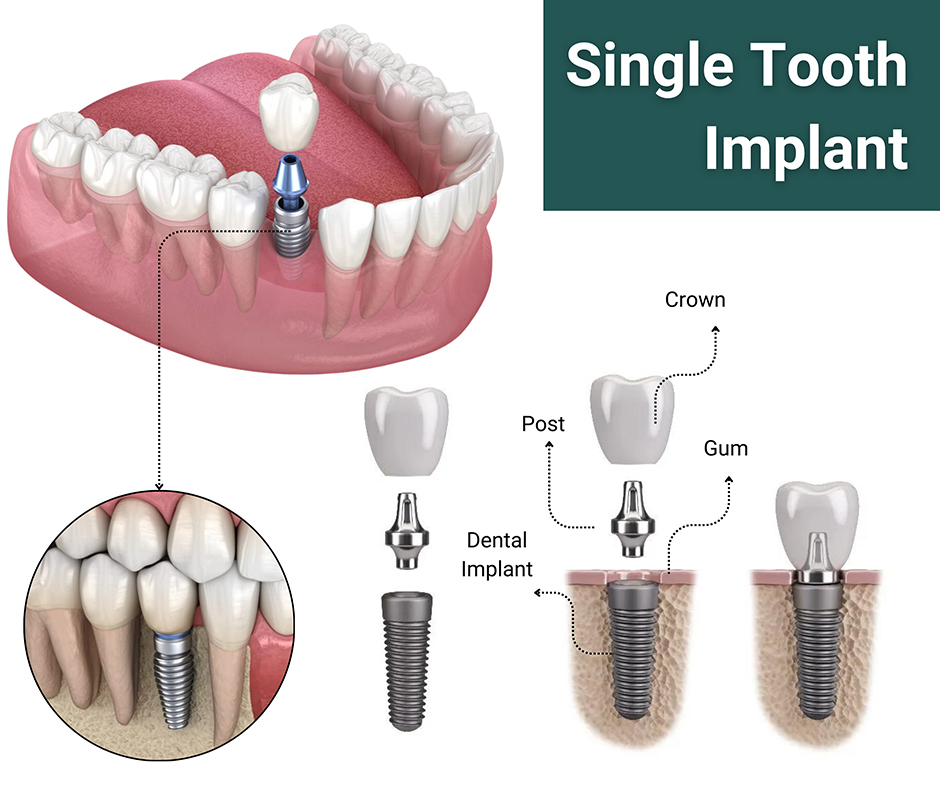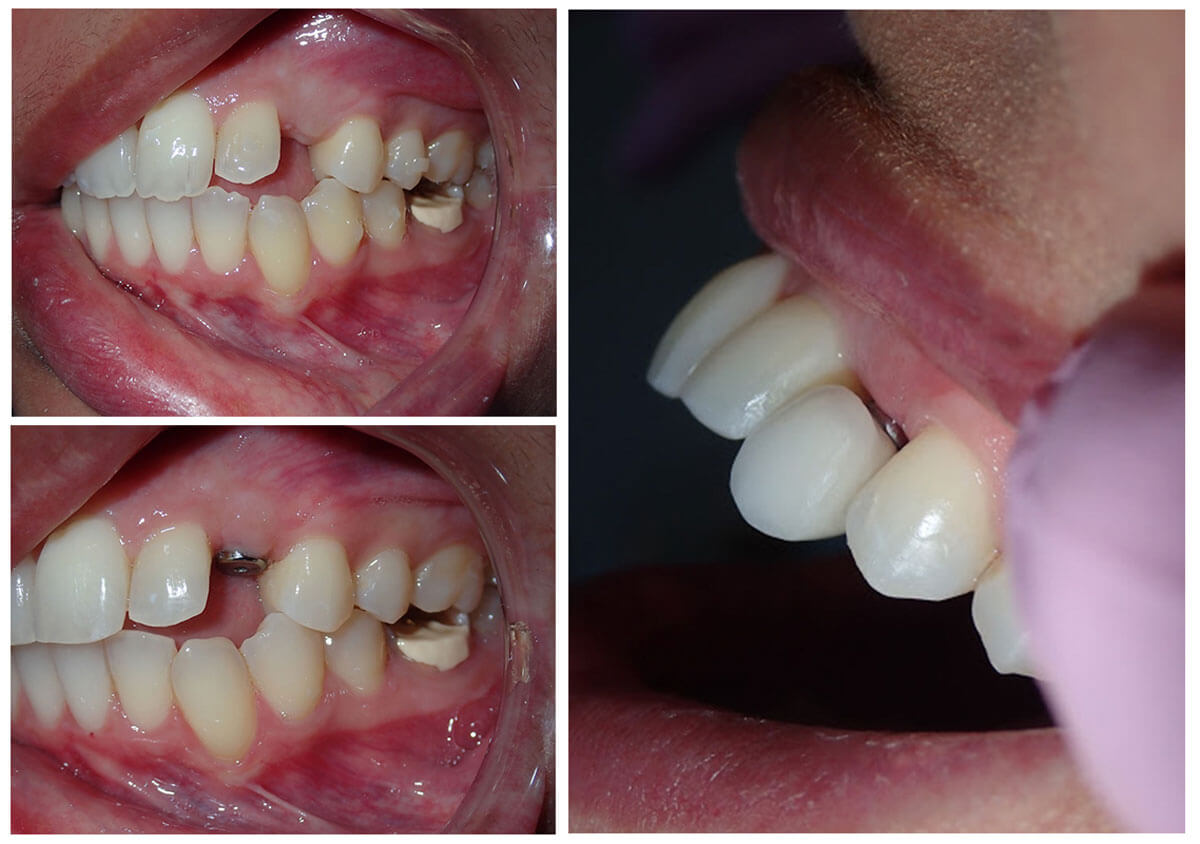3 Simple Techniques For Dental Implants
3 Simple Techniques For Dental Implants
Blog Article
A Biased View of Dental Implants
Table of ContentsThe 8-Second Trick For Dental ImplantsDental Implants - The FactsRumored Buzz on Dental ImplantsThe Only Guide to Dental Implants
are clinical devices surgically dental implanted into the jaw to bring back a person's capacity to chew or their appearance. They offer support for artificial (fake) teeth, such as crowns, bridges, or dentures. When a tooth is lost due to injury or illness, an individual can experience difficulties such as rapid bone loss, defective speech, or changes to eating patterns that result in pain.
Structure of The Dental Implant System picking oral implants, talk with your dental supplier regarding the prospective advantages and risks, and whether you are a candidate for the treatment. Points to think about: Your total health is a vital factor in establishing whether you are a good prospect for oral implants, how long it will take to recover, and just how long the implant may stay in place.
Cigarette smoking might impact the healing procedure and reduce the lasting success of the implant. The recovery procedure for the implant body might take numerous months or longer, during which time you commonly have a temporary abutment in place of the tooth. the oral implant procedure: Carefully follow the dental health instructions provided to you by your oral service provider.
7 Simple Techniques For Dental Implants
Implant failure can result in the need for another procedure to fix or replace the implant system. Brings back the capacity to chew Brings back aesthetic appearance Aids keep the jawbone from diminishing because of bone loss Maintains the health of the surrounding bone and gums Assists keep adjacent (nearby) teeth stable Boosts high quality of life Damage to surrounding natural teeth during implant positioning Injury to the surrounding tissues throughout surgical procedure, such as sinus perforation Injury throughout surgery (as an example, crack of surrounding jawbone) Insufficient function, such as really feeling like the teeth do not bite together normally A sensation that the tooth hangs or twisting in area arising from a joint screw loosening up Implant body failing (looseness of the dental implant body) due to systemic infection, which might be more probable in people with uncontrolled diabetics issues due to local infection in bone and gums supporting the dental implant body due to delayed healing, which may be most likely in people that smoke Trouble cleaning up the periodontals around the dental implant, resulting in poor oral hygiene Untreated gum condition Post-surgical numbness due to nerve impingement or damage Constantly alert health treatment companies and imaging professionals that you have oral implants before any magnetic resonance imaging (MRI) or x-ray procedures.
FDA is not knowledgeable about any type of unfavorable occasions reported for MRI or x-ray treatments with dental implants. Oral implants systems are commonly made of products that adhere to global agreement requirements of the International Company for Standardization (ISO) or ASTM International. These requirements have information of what makes a secure product.
Oral implant systems are reviewed according to worldwide consensus criteria. Biocompatibility screening, to reveal that bodily call with the helpful resources device does not trigger issues like irritation or allergic response, is part of the evaluation that helps web make sure the materials in the oral implant system are safe and do not cause damaging effects when dental implanted in individuals.

4 Easy Facts About Dental Implants Shown
Some individuals are not qualified for dental implant surgical treatment. It is for oral specialists to operate on individuals with: intense illnessuncontrollable metabolic diseasebone or soft tissue illness or infectionIf these concerns are fixed, a person can have the surgery. Dental Implants. In, oral cosmetic surgeons avoid operating people with: If individuals with any of the above go through dental implant surgery, there is a higher risk of the dental implant stopping working
Some people have a jawbone abnormality that prevents adequate bone for a dental implant look at this web-site from establishing. In such cases, a surgeon might require to perform a ridge modification. This entails raising the periodontal to subject the area of warped bone. The specialist will then use a bone or bone replacement to repair and develop up the area.
Dental implant surgical treatment is a customized process. It's not the exact same for every person. But the adhering to provides a general introduction of what you can anticipate your dental professional, oral surgeon, periodontist or prosthodontist to do: Position the dental implant surgically. Provide you time to recover. Attach the message and last crown, bridge or denture.
Next off, your doctor will thoroughly put the oral implant into your jaw. Finally, your specialist will reposition your periodontals and close the laceration with stitches. If your dental implant is near the front of your mouth, your dental expert will certainly make a momentary tooth for you to use up until you heal. This way, you won't have a gap in your smile while you recover.
The 4-Minute Rule for Dental Implants
Your copyright can tell you what to anticipate in your situation. During the recovery phase, your jawbone ought to fuse to the oral implant. This procedure, called osseointegration, is essential for stability and lasting success. This procedure can take anywhere from three to 9 months. In some situations, it might take longer.
When your dental implant heals, your dentist can connect the abutment (small connector post) and your final reconstruction (crown, bridge or denture). This normally takes concerning one hour to finish and may call for a 2nd small surgery. You shouldn't feel any type of pain throughout your oral implant treatment because your copyright will certainly use drug to numb your gum tissues.
Report this page